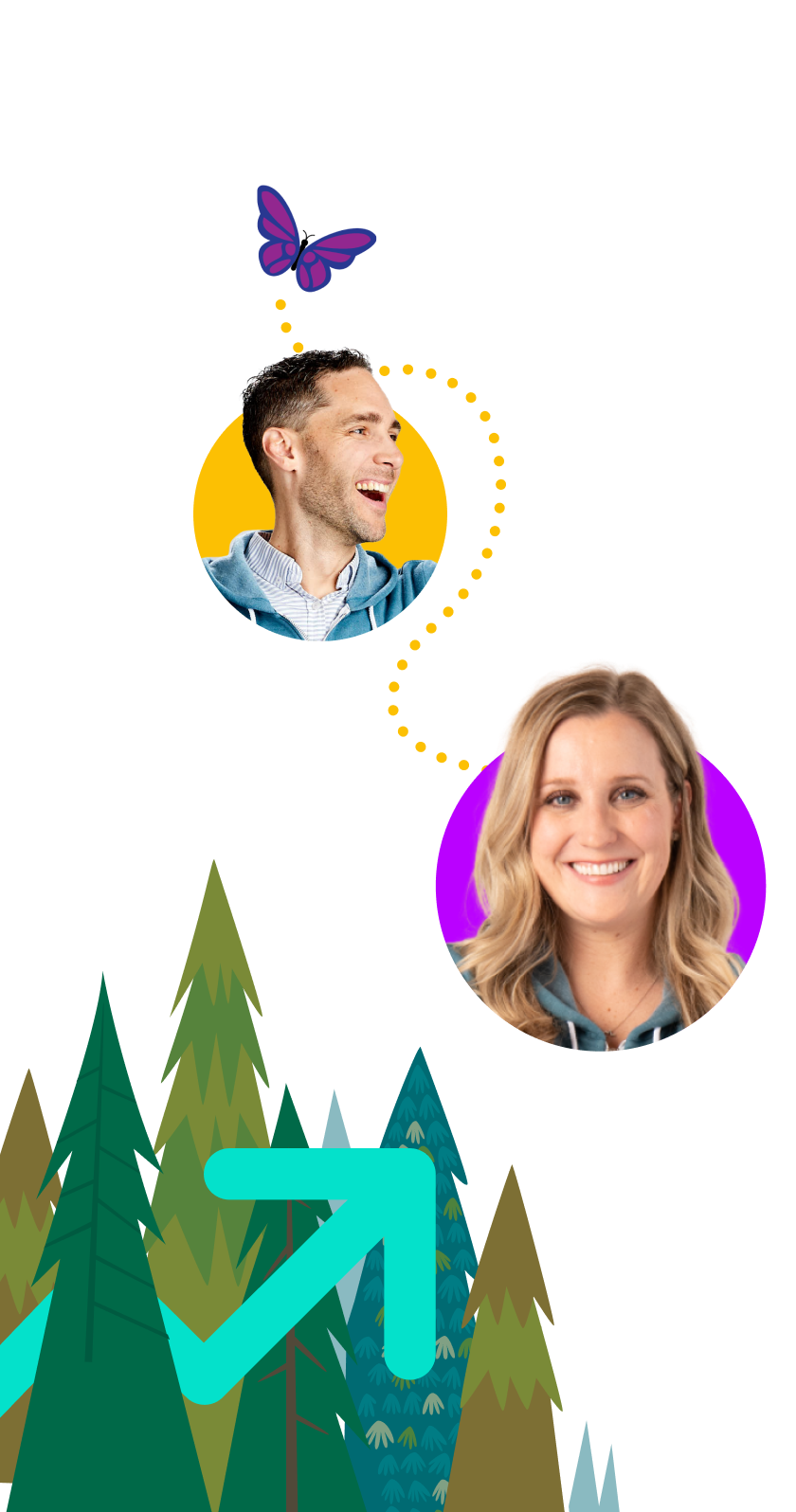The best relationships are built on trust, and the sales world is no exception. In fact, it’s the bedrock of every deal.
Many potential buyers view salespeople with trepidation, often due to hard-charging representatives who will say anything to get them to sign on the dotted line.
To overcome that initial barrier, sales professionals have a powerful tool at their disposal: the Sandler sales methodology. This simple and flexible system takes the pressure off the client, laying the groundwork for a relationship based on trust. Let’s take a look at what it entails and how it can help you close deals and retain customers for the long haul.
What you’ll learn:
Level up your game with AI conversation insights
Sell smarter using Einstein Conversation Insights — with customer signals and next-step guidance to help you close.


What is the Sandler Selling System?
The Sandler Selling System, also known as the Sandler sales methodology, was created by sales expert David H. Sandler in 1966. It consists of seven sequential steps (which we’ll explore in a moment) that allow a sales professional to completely control the discovery process. At its foundation, the Sandler sales methodology is a simple, linear system designed to help representatives build rapport with prospects and guide them to making sound purchasing decisions.
The Sandler Selling System: A step-by-step breakdown
While there are lots of sales methodologies out there, the Sandler sales methodology really shines in helping reps overcome negative preconceptions about their motivations. By avoiding the hard sell and focusing on guiding customers, it resets interactions that would otherwise be marked by suspicion and resistance. Here are the steps:
- Establishing bonding and rapport: This first step lays the foundation for the end goal — a sale. Sales professionals keep the focus on bonding and rapport by prompting prospects to share information. They get prospects to talk about their business and themselves, which creates a relationship based on mutual respect and equality.
- Setting an upfront contract: No, this isn’t a contract for a sale. Instead, think of it like a set of rules and expectations. It lays out how the two sides will communicate, from meeting length and frequency to the outcomes of every interaction. It’s also a promise made by the sales professional to the prospect: this is what you can expect from me throughout our conversations. Upfront contracts ensure that prospects can trust sales reps to be honest and transparent, with no unwelcome surprises. It can also give prospects peace of mind and help them settle into the relationship and start to bring down any walls they may have up.
- Identify the prospect’s pain: Now that you’ve established a relationship with the prospect and earned their trust, it’s time to get into the nitty gritty of the discovery process. This is where the Sandler pain funnel concept comes into play. By asking open-ended questions, you can start to figure out the prospect’s business problems. During this stage, you’ll gently push the prospect to explore and share every aspect of the challenges they’re facing, including previous attempts to solve the issues and how they’re feeling about the issue.
- Uncover the prospect’s budget: Continue using open-ended and empathetic questioning techniques to see if the prospect has the budget and staff in place to resolve their business problem, as well as (importantly) the will to see it through. This budget discussion provides another offramp for both you and the prospect. If it becomes clear that your potential customer cannot afford your product or isn’t fully committed to tackling the issue, then your efforts might be better focused elsewhere.
- Identify the decision: At this point, your prospect has come to a purchasing decision. If the decision is positive, you’ll hammer out the details of the buying process: when it will occur, who will be involved, and all other pertinent information needed to ensure the sale goes smoothly.
- Present your fulfillment of the agreement: Offer a solution to the customer’s problem. That solution must be within the stated budget and meet the criteria set up during step two. Again, it’s crucial that there are no surprises here. The prospect should feel that you’ve stayed true to the agreed-upon ground rules and have delivered a possible solution as promised.
- Confirm the post-sell process: Lay the groundwork for future business, ensuring the customer remains satisfied with your solution, and head off second-guessing or last-minute competition from a rival company.

Thanks, you’re subscribed!

Benefits of implementing the Sandler Sales System
The Sandler sales methodology was developed both to overcome negative perceptions of sales professionals and make it easier for those representatives to achieve success. Let’s take a look at some tangible reasons why this strategy can work for you.
- It’s easy to learn: Its simplicity and emphasis on transparency means sales professionals can use the techniques without enduring a long training period.
- Sandler helps improve deal-closing rates: The focus on building rapport and gathering crucial information means that sales representatives will spend far less time chasing dead ends. And because adherents set upfront contracts, the sales process moves at a more predictable pace.
- Elevated customer retention: All that trust and rapport-building means deeper customer relationships. If your customer experiences an issue with your product or service, they’ll be much more likely to cut you some slack if there’s a mishap or miscommunication.
- Boosted sales margins: Customer retention rates play a role here, of course, as does the previously mentioned shorter sales cycle. And by weeding out ill-suited prospects, sales teams can expend resources nurturing leads that will convert at greater rates.
- Greater sales forecasting predictability: Team leaders love accurate sales forecasts. The Sandler method focuses on an in-depth discovery process, which empowers sales teams to form much clearer ideas about just how many deals they can expect to close in a quarter.
Best practices for using the Sandler sales technique
Achieving sales excellence via this method requires buy-in from every single team member, from the most senior leader to the newest person working the phones. Here are some best practices for using Sandler techniques.
- Adopt the right attitude: Maybe you’re more familiar with other methods or prefer a hard-charging sales style. To get the most out of the Sandler sales methodology, be positive and really lean into empathy and the open-ended nature of this technique.
- Use negative reverse selling, but be careful: This Sandler technique is designed to cut through the noise and get an answer from a prospect quickly. Make a simple statement such as, “If I’m hearing you correctly, it sounds like our software might not be a good fit for you right now. Is that right?” If they answer in the negative, then you can move on to greener pastures. A positive response essentially means the prospect is making the argument for you. That said, be gentle and respectful when using this technique so you don’t offend.
- Determine if it should be augmented by other sales techniques: There’s no such thing as a one-size-fits-all approach to sales. Depending on your product and the market you serve, you might find that you only need to use the method for certain stages in the sales process. Be ready to pivot as needed.
- Constantly examine what’s working and what’s failing to hit the mark: This is not a set-it-and-forget-it sales method. Your team might find that prospects respond positively to questions being phrased in a certain way, or perhaps up-front contracts need to be tweaked. Sales leaders should be monitoring interactions and encouraging their reps to share success stories.
How to train your sales team in the Sandler method
Like any sales method, the Sandler selling system requires ample training. While it might be simple conceptually, mastering it takes time, experience, and reinforcement. Here’s how:
- Leaders must lead: If you expect your team to adopt the method, then you must master it yourself. Belief goes a long way here, and you won’t be able to train your team if you don’t understand the techniques.
- Engage in Sandler training sessions: As a training and professional development organization, Sandler has franchise locations in more than 28 countries. Find a franchise near you to get your team the rigorous training it will need to be successful.
- Reinforcement training: It’s not enough to simply train your staff once and set them loose. Sandler offers ongoing training that helps reps build better habits, shift their attitudes, and adopt winning techniques.
Join the Salesblazer movement
We’re building the largest and most successful community of sales professionals, so you can learn, connect, and grow.

Comparing Sandler to other sales systems
The Sandler sales methodology is not the only game in town. Sales teams can adopt any number of deal-closing strategies, depending on the market and type of customers being pursued. Let’s take a brief look at some of the most common sales methodologies and how Sandler differs and/or overlaps with them.
- BANT and MEDDIC: These sales methodologies are often mentioned in the same breath, with leaders engaging in a BANT vs. MEDDIC debate. Both emphasize gathering data — who can make purchasing decisions, what is the prospect’s budget, and need, much like the Sandler sales system. That said, BANT places no emphasis on building a relationship with a prospect. And while MEDDIC does value understanding a prospect’s pain, opening the door to a deeper relationship, its focus on the human element does not match Sandler’s.
- SPIN: Neil Rackham’s method focuses on four areas to guide sales reps in asking questions: situation (gather information), problem (identify pain points), implication (help prospect understand why they should solve the problems), and need-payoff (designed to nudge the prospect to make a decision). It shares some DNA with Sandler; it avoids pushing prospects to buy products they don’t need and has a similar style of questioning — but it lacks an up-front contract, and unlike Sandler’s general viability, SPIN is often best employed for prospects who aren’t fully aware of their needs.
- Challenger: In this system, a sales professional really drives the conversation, seeking to educate a prospect and firmly guide them to a conclusion. Less emphasis is placed on building relationships and more on controlling the narrative.
Is the Sandler selling system right for your team?
If you’re seeking a sales system that is flexible and human-centric, the Sandler sales methodology might be a good fit for your sales team. For more than 50 years, sales teams have been employing this methodology to make selling easier, warmer, and more effective. That can be an especially powerful mix, both for your bottom line and if you’re facing prospects who need more of a human touch before making purchasing decisions.
Before making the leap into the Sandler selling system, consider the market you serve and the nature of your sales team. Be sure to take advantage of Sandler’s training opportunities, and don’t be afraid to adopt what makes sense for your sales organization and leave what doesn’t. The key here is trust — believe in the system, support your sales team’s journey, and lean into the techniques designed to build rock-solid customer relationships.
Learn how to break through 5 common sales objections
Get our free Objection Handling Template for time-tested scripts, examples, and a team exercise to handle any objection.









